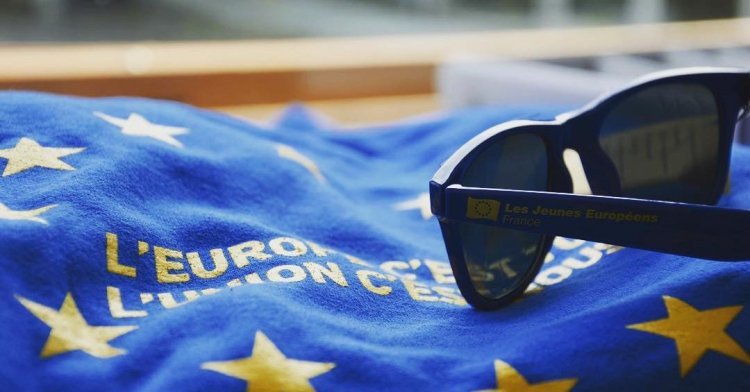So many of the people who see themselves as Europeans have to go through this course, sometimes struggling to learn about a much broad cultural field, and wondering where to start learning what is it that make us truly Europeans, and not just westerns. Luckily enough there are ways to start. Getting involved in any European organization is a very good beginning, however, action requires knowledge, and to nourish it we have (and always will) pieces of timeless wisdom: classics. Anyone looking for his or her European identity should read this short conference, for it is probably one of the best attempts to define Europe, and has already become a classic that deserves to be known and widespread across the continent.
Steiner proposes five key elements famous for being equally brilliant and original, through which we can try to define ourselves as Europeans. Conditions, experiences and concepts that are genuinely European, besides (and often opposed to) our belonging to the western world and our necessary and eternal relationship with America.
The first one is Coffee houses. Not because of the coffee itself, of course, but because of the space of creation and exchange they have historically represented for Europe’s greatest intellectuals. A European Café has always been a place to read, write, and discuss about politics, philosophy and literature. It has been a space that brought together artistic trends and political movements, individuals who made networks and developed ideas that changed the world. Steiner declares it perfectly saying: "So long as there are coffee houses, the ‘idea of Europe’ will have content”
The second one is geography: Nothing else than the small, calm and humanized geographical condition of Europe. It is this condition that makes Europe so “walkable”, and it is being so “walkable” that has allowed people and winds of history to move so easily from one country to another. We need to admit though that most of these trips have been made by soldiers going to war. Indeed, only a small minority of wars in Europe’s modern history have been intra-state ones. But besides soldiers, (which have also been a communication vehicle), merchants, artists and scientists also moved across European boarders easily because of its domestic geography.
The third one is the power of the past within the present. To understand this, we need to think about how Europeans relate with their own history, in a way which is more ‘present’ than any other place. We are living right in historical sites, surrounded by them. Steiner exemplifies it with the naming of the streets after the poets, painters and thinkers that used to live in them, unparalleled anywhere else in the world.
The forth one is complex and profound. It schematically tells that Europe is essentially a ‘tale of two cities’, the result of the fusion between the Jewish and Hellenic cultures, like two irreconcilable parents, but who’s child cannot be described without one of them. European history is ‘saturated’ of religious references and mystical thought is a starting point of many of our greatest thinkers, but Europe is also the rebellion against the magic, and its successes have been mostly because of the order, the empiricism and the examining nature of thought that come from our Hellenic past.
Finally, the fifth one is the ‘awareness of the death of its own civilization’ as it has been written by Raquel Ribeiro [1]. These two last European genuine features might not look very attractive. In fact, the fifth one sounds pessimistic and certainly not appealing. But that is just another consequence of our religious and philosophical heritage, and we should learn to understand the message of it, or try to be part of the cultural change that is permanent to every culture. The worrying message of Steiner is understandable because he sees himself a possible end of the European essence in the new global melting pot of globalization. What will we do to avoid it? Trying to make Europe a globalization-free territory would fail, but how do we preserve a culture we don’t know, within a diversity we know less about?
The answer to this question requires, first of all, an effort to know better and more about us, because only then we will be able to decide how to be with everyone else.

1. On 27 June 2015 at 04:00, by Krishna kumar sinha Replying to: On Steiner’s “The Idea of Europe”
Replying to: On Steiner’s “The Idea of Europe”
Europe has lead the humanity in the last 300 years throgh a crucial phase of human evolution.the values engendered by renaissance and reformation are the bed rock of European civilization.It is however very clear that terms like preservation of cultural identity or civilisation hegemony come into vogue only due to a self centric and short sighted view. Civilisational identity like human identity are only like a small unrecognizable dot in the grand canvas of Human history. See the dots but appreciate the whole painting.THE WHOLE IS ALWAYS BIGGER THAN THE SUM OF THE DOTS.
Follow the comments: |
|
